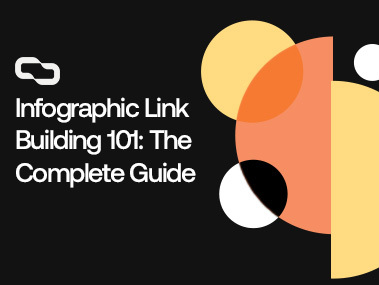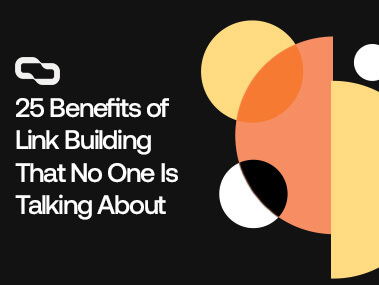Get links on brand new relevant articles for a boost of Authority and Relevance that’ll catapult your SEO. Our links include both DR and Traffic, so you don’t have to choose between one or the other.

Nowadays, it’s almost impossible to read an article about link building, watch an SEO video, or even participate in a forum without stumbling across SEOs talking about HARO.
“You just need to answer a few queries, then boom you’ll get high-quality backlinks from huge publications like Forbes and The Guardian” — they say.
The reality, however, is far from that.
I’ve been building links with HARO for over 5 years now — during which I’ve got many backlinks from top-tier publications, and I can tell you that it’s not as easy as they make it sound.
Mastering HARO link building isn’t an overnight task.
It requires patience, persistence, and continuous fine-tuning of your HARO link-building strategy.
In the next few minutes, I’ll share with you everything you need to know about HARO.
From what is HARO and how it works to the 10 best tips to earn links from this platform.
I’ll also share with you my own HARO pitch template, so you can use it yourself without using a HARO link-building service.
Key Takeaways
- HARO link building requires patience, unique insights, and a well-tailored approach to stand out from the competition.
- A successful HARO pitch is timely, personalized, concise, and offers a unique perspective on the requested topic.
- Exploring less competitive HARO alternatives like Featured, Qwoted, and ProfNet can supplement your link-building strategy.
What Is HARO Link Building?
Help a Reporter Out (HARO) is a platform that connects journalists, reporters, and writers with subject matter experts to help them craft their stories.
Here is how HARO works in a nutshell:
- Journalists can submit queries or HARO requests for information on specific topics.
- Sources (like you) can respond to any query with their stories, insights, or quotes.
- When a reporter likes your HARO responses, they’ll include it in the article with a link back to the source’s website.
Sounds pretty straightforward, right?
Just answer a few queries and watch those high-quality, dofollow backlinks roll in.
Well, there’s a bit more to it.
HARO is extremely competitive right now.
A single query can attract dozens of responses.
And I’m not talking about generic AI responses — although I know some SEOs getting great results with them.
I’m talking about well-crafted HARO pitches by real experts.
To add to the challenge, journalists often submit multiple queries per week.
That’s hundreds of emails each week — how the hell are you supposed to stand out?
Well, that’s exactly what I’m here to teach you.
In the next section, I’ll show you all the insider tips we use in the agency to get hundreds of white hat backlinks from websites like Forbes, The New York Times, Healthline, Fortune, and more.
Tips to Use HARO for Link Building
1. React Quickly
The early bird gets the worm (or the backlink, in this case).
Journalists work on tight deadlines, and they often get the insights they need within the first few responses.
That’s why it’s extremely important to respond as quickly as possible to increase your chances of being featured.
HARO sends out three emails per day — at 5:35 a.m., 12:35 p.m., and 5:35 p.m. Eastern Time from Monday to Friday.
If you’re serious about HARO link building, you should adjust your schedule around these times, so you can be the first one to respond.
2. Quality Over Quantity
It’s easy to get caught up in the number game, but the reality is that quality trumps quantity in HARO.
Anyone can rephrase what’s on page 1 of Google, or make a ChatGPT prompt that can answer HARO queries.
In fact, there are many prompts out there that produce decent responses.
However, that’s not what will get you the high-quality links you want.
It’s simply not what the reporters are looking for.
Journalists are looking for responses with unique angles, personal experiences, original research, thought-provoking viewpoints, etc.
They want your help to craft a newsworthy story, so if you don’t add anything new to the table, they’ll just ignore your pitch.
In fact, many reporters block sources that they consider “time wasters.”
Now, I understand that this can be really hard to achieve.
After all, we’re just SEOs.
We’re only experts at getting our websites stuck on the second page of Google.
However, I promise that you’ll find queries that align with one of your experiences or interests — even if your only interest is playing video games.
Agency Tip: Look at what’s already on the Search Engine Results Pages (SERPs) for the query’s topic and brainstorm ways to expand, contradict, or refine those existing viewpoints.
3. Keep it Short
Journalists are combing through hundreds of pitches for each query.
Keep yours concise and straightforward, ideally less than 200 words.
Focus on covering what the journalist is specifically asking for in their query, and keep your information highly relevant to the topic at hand to get the best out of your HARO link-building efforts.
Agency Tip: Your HARO success highly depends on your quotability. This can be achieved by using new studies and numbers, clear analogies, and light-hearted jokes.
4. Create Multiple Personas
Many HARO link builders fall into the mistake of only pitching on behalf of the CEO.
However, this really limits the number of queries you can apply for.
Different journalists may have specific interests or angles they are exploring, and having various personas allows you to cater to a broader range of queries.
For example, you can create a distinct HR Manager persona to answer queries about talent acquisition, employee engagement, and workplace culture.
A Chief Marketing Officer persona to contribute valuable thoughts on marketing strategies, branding, and industry positioning.
An SEO to talk about the best link-building strategies.
This will increase the likelihood of fitting into various journalists’ story requirements.
Agency Tip: Reporters LOVE stories, so make sure to share anecdotes or narratives that illustrate your point and make it more relatable
5. Catch Their Attention
Reporters usually work on multiple pieces at the same time.
This means that they could receive hundreds of emails per day — most of which won’t be opened.
That’s why it’s extremely important to write a catchy email subject line.
In fact, I could argue that the subject line is more important than the pitch itself.
Here are a few tips to craft the perfect subject line for HARO queries:
- Create Curiosity: Pose a question or use a teasing statement that encourages them to open the email to find out more.
- Numbers and Data: If your pitch involves statistics or numbers, consider including them in the subject line. Specific figures can grab attention and make your email stand out.
- Avoid Clickbait: While it’s essential to be attention-grabbing, avoid misleading or exaggerated subject lines. Reporters appreciate honesty and authenticity.
- Humor (with Caution): Humorous subject lines can work if they align with your pitch and the reporter’s style, but use humor cautiously as it may not resonate with everyone.
- Stay Relevant: Make sure your subject line directly relates to the topic or query the reporter posted on HARO. Avoid generic or unrelated subject lines that may cause your email to be overlooked.
6. Personalize Your Pitch
Make an effort to personalize your pitches by including the journalist’s name.
This shows you’ve paid attention to the details and can help foster a stronger relationship with the journalist, possibly leading to more opportunities down the line.
7. Start with Your Credentials
Begin the pitch with a brief, one-line introduction that explains who you are and why you’re an expert on the topic.
Highlight any relevant qualifications, achievements, or industry experience that make you a credible source.
This upfront acknowledgment of your expertise can capture the journalist’s attention and make them more inclined to consider your response.
8. Add an E-Signature
After presenting your pitch and establishing your credentials, it’s crucial to conclude your email with a professional electronic signature.
This reinforces your credibility and makes it easier for journalists to get in touch with you if they need further details or have follow-up questions.
Agency Tip: Conclude by offering your willingness to answer any follow-up questions and express your intent to share their article on your social media channels once it’s live. This offers added value for the journalist and increases the chances of your pitch being selected.
9. Follow Up
Journalists often receive thousands of emails, and your initial pitch might get buried or overlooked.
Sending a polite and professional follow-up email can remind them of your pitch and show your genuine interest in contributing to their story.
Here are some tips for an effective follow-up email:
- Wait a reasonable amount of time before following up, usually around 2 to 3 days after sending your initial pitch.
- Use the same subject line as your original email but add “Follow-Up” at the beginning to make it clear.
- Mention that you previously sent a response to their query and you’re just making sure they got it.
- Reiterate your key points briefly and express your enthusiasm for the opportunity to contribute to their article — we usually do that using ChatGPT.
- Be courteous and respectful in your tone, avoiding any pressure or frustration.
- End the follow-up email with another thank-you and your contact information for easy reference.
10. Play The Long Game
Success with HARO doesn’t happen overnight.
It requires patience, persistence, and constant refinement of your approach.
That’s why I highly recommend aiming for long-term relationships rather than one-off transactions.
Keep a record of your contacts and make an effort to keep in touch with them, even outside of HARO.
If a journalist features your response in their article, take the time to express your gratitude and share the published piece on your social media platforms.
HARO gives you an amazing opportunity to establish genuine relationships with journalists in your field, so make sure to seize it.
What Does The Perfect HARO Pitch Template Look Like?
Subject: [Query Topic] – Fresh Perspective from [Your Name]
Dear [Journalist’s Name],
I’m [Your Name], [Your Title] at [Your Company]. I’ve been working in [relevant field] for [number of years] years and I’d love to contribute to your piece on [Query Topic].
[Your Response]
Feel free to reach out if you need any additional information or clarification. I’m also happy to share your article on my social media channels once it’s live.
Best regards,
[Your Full Name], [Your Job Title] at [Your Company Name]
Website: [Your Website URL]
LinkedIn: [Your LinkedIn Profile URL]
Email: [Your Email Address]
Headshot: [Link to headshot in Google Drive]
Phone: [Your Phone Number]
The Best HARO Alternatives
Everyone and their mother is now using HARO for link building.
This made it a lot harder to rise above the noise and build links.
After all, we’re fighting over the same HARO links here.
That’s why I highly recommend checking the following HARO alternatives.
They don’t have the same number of queries as HARO, but they’re definitely less competitive.
1. Featured (Previously Terkel)
It’s just like HARO, but you only get 3 credits per month for the free plan.
I’m usually not a huge fan of paid services, but I actually like this one.
The platform design is really good, with plenty of queries, less spam, and you get to set alerts for keywords.
So if you’re truly an expert in your field, I highly recommend it.
2. Qwoted
I really like the screening process of Qwoted.
I tried to create a new account using one of my niche websites’ personas — it’s a fake one with a This Person Doesn’t Exist picture, you know the drill.
To my surprise, they wouldn’t let me join without verifying my identity and expertise.
First, they asked for my professional bio/LinkedIn and a company website, then they asked me to jump on a call to verify my identity.
This barrier of entry will let a lot of spam out of the platform, which is something I really like.
3. ProfNet
ProfNet, like HARO, connects you to journalists who are looking for experts in their news releases.
It is also owned by Cision, the same parent company as HARO — no wonder it has the same lousy design.
ProfNet, however, is not free.
You must pay a fee to receive ProfNet queries.
And it’s not a fixed fee either, you must contact them to get a quote based on how many categories you choose, your organization type, and the number of users.
4. SourceBottle
SourceBottle differentiates itself from HARO by offering opportunities around Giveaways and Case Studies.
It also allows small, independent media such as bloggers and podcasters to seek expert sources for quotes and for guest blog writers.
5. Muck Rack
Muck Rack is a Public Relations Management System (PRMS) that allows sources or businesses to reach out to journalists and influencers.
It provides a list of journalists and influencers, with their contact details, allowing businesses to skim through for contacts relevant to their expertise.
It’s mainly made for PR agencies, but you could use it as well if you can justify spending $5,000 a year for a subscription.
FAQs
Is HARO Good for Link Building?
HARO is good for link building, especially if you’re a subject matter expert. By responding to relevant queries as an expert source, you have the opportunity to get featured in high-authority publications.
What Is the HARO Technique in SEO?
The HARO technique in SEO involves using the HARO platform to respond to media queries as an expert in your field. By providing valuable insights to reporters, you can earn media mentions and backlinks to your website, enhancing your site’s authority and SEO rankings.
What Are the Benefits of HARO Links?
The benefits of HARO include gaining media exposure, establishing credibility as an expert in your industry, and earning valuable HARO backlinks to your website.
Conclusion
HARO is more than spending a few hours sending generic pitches per day.
It’s about creating connections, offering value, and becoming a voice that journalists want to feature.
That’s why my final tip to master HARO link building is to aim to be more than just a source of information.
Aim to be a partner who helps journalists create compelling, insightful stories.
Use your expertise to provide unique perspectives, research, and insights that can’t be found elsewhere.
That’s what HARO link-building services do.
So, do that and you won’t only get super high authority backlinks from major publications but also gain media exposure and establish yourself as a leader in your field.
Find out your exact cost of ranking for your dream keyword
Find out nowLet’s get you ranking now
If you want the team at Get Me Links to help you get more traffic
Book a call NOW Back to Blog
Back to Blog 13 Minutes Read
13 Minutes Read


